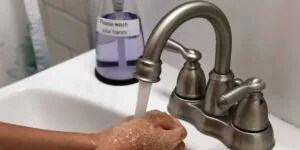Understanding Piping in BC Homes: Impact on Insurance and Homeowners

Piping plays a crucial role in the infrastructure of homes across British Columbia, providing essential functions such as delivering water, heating, and drainage. However, the type and condition of piping in a home can have significant implications for both homeowners and insurance providers. Understanding the impact of piping on insurance is essential for homeowners to ensure adequate coverage and mitigate potential risks.
Types of Piping:
Homes in BC may feature various types of piping, each with its own advantages, disadvantages, and lifespan. Common types of piping found in homes include:
- Copper Piping: Copper piping is durable, corrosion-resistant, and has a long lifespan, making it a popular choice for water supply lines and plumbing systems in homes. It’s safe to say that copper piping has been a standard choice for plumbing systems in BC Homes for several decades. Many homes built from the 1960s on-wards likely feature copper plumbing, and copper pipes continue to be widely used in new construction and plumbing renovations in BC today.
- Poly-B Piping: Polybutylene (Poly-B) piping was used extensively in BC homes built between the 1985 and 1997. It has a history of failures due to deterioration, leading to leaks and water damage that led to numerous class action lawsuits. The combine class-action lawsuits against Poly-B constituted one of the largest pre-settlement litigations in North American history, with total combined claims reaching into the billions of dollars. As a result, poly-B piping was banned in Canada twice:
- In 1997, the National Plumbing Code, which oversaw all plumbing trades in Canada, banned its use for constructing any building requiring piping systems.
- In 2005, the government of Canada officially banned Poly B™ due to a substantial volume of lawsuits filed against Shell and Dupont (manufactures). These lawsuits were over structural damage and property damage caused by ruptured Poly-B™ piping throughout hundreds of homes. Shell and Dupont lost the lawsuit as Poly B™ was reported to be failing after a few years of installation, resulting in structural damage to drywalls, water damage, and costly restoration.
- Galvanized Piping: Galvanized piping saw widespread use in residential construction in BC from the early 1900s through the mid-20th century. However, as homes with galvanized piping have aged, issues such as corrosion, rust buildup, reduced water pressure, and leaks have become more common. As a result, many homeowners with galvanized piping have opted to replace their plumbing systems with newer materials, such as copper or PEX piping, which offer improved performance and longevity.
- Kitec Piping: also known as Kitec piping or Kitec fittings, was introduced in Canada in 1995, and was used until 2007. This type of plumbing system was popular for its ease of installation, affordability, and resistance to corrosion. Kitec plumbing consisted of flexible aluminum pipes with an inner layer of cross-linked polyethylene (PEX), connected by brass fittings. However, Kitec plumbing gained notoriety due to its propensity to degrade and fail prematurely. Over time, the brass fittings in Kitec plumbing systems were found to be susceptible to corrosion and dezincification, which could lead to leaks, water damage, and potential plumbing system failures. As a result, Kitec plumbing has been the subject of numerous lawsuits and recalls.
- PEX Piping: Although PEX has been in use since the 1960s it has taken quite some time to gain popularity in BC. Only after 1999 it has become one of the most common materials used in residential plumbing systems here. Cross-linked polyethylene (PEX) piping is flexible, easy to install, and resistant to corrosion and freezing. PEX piping is also more affordable than copper piping, making it a cost-effective option for plumbing installations and renovations. PEX piping is commonly used for water supply lines and radiant heating systems.
